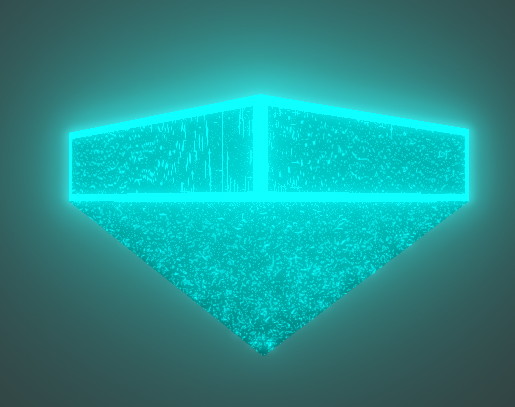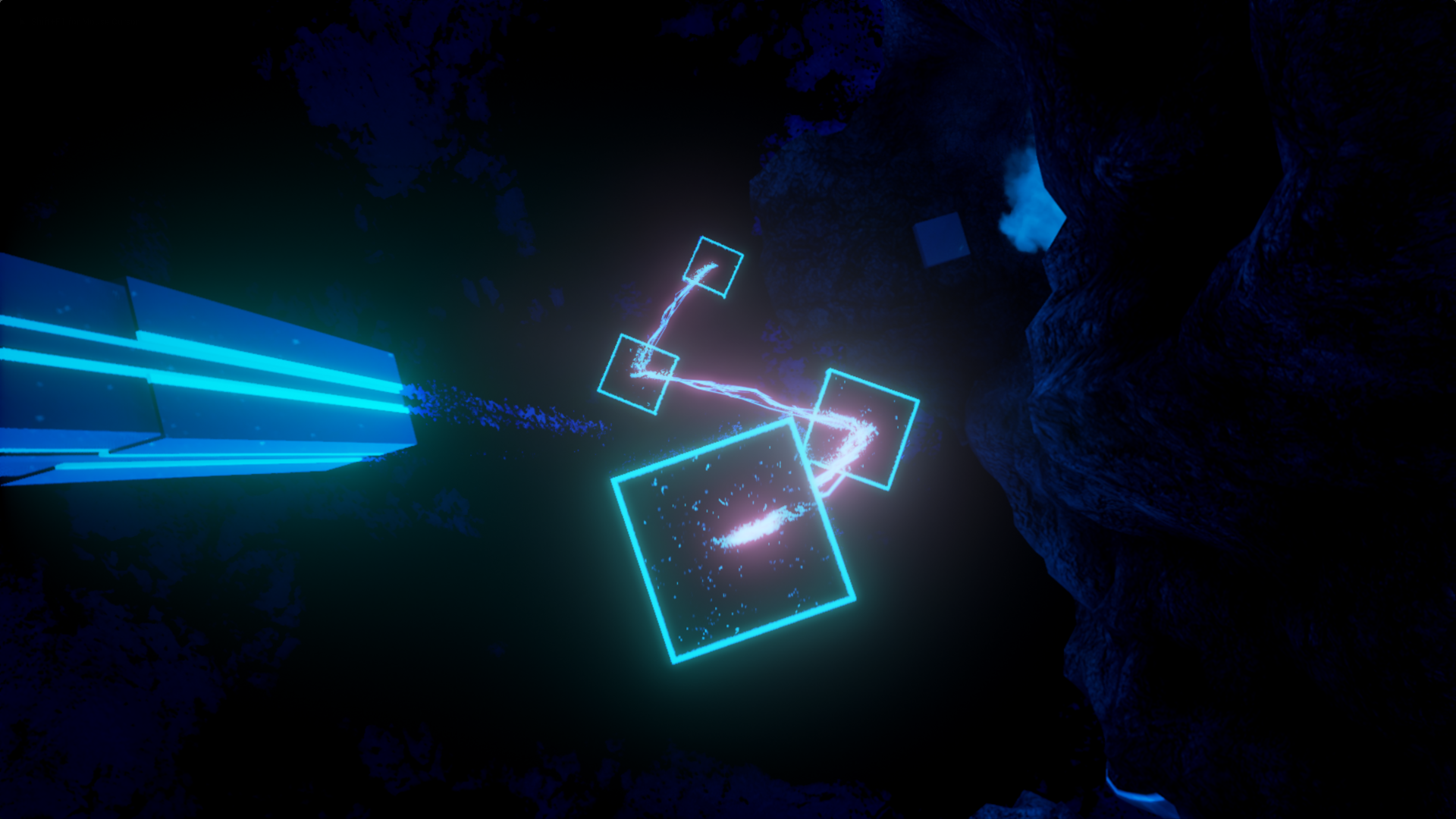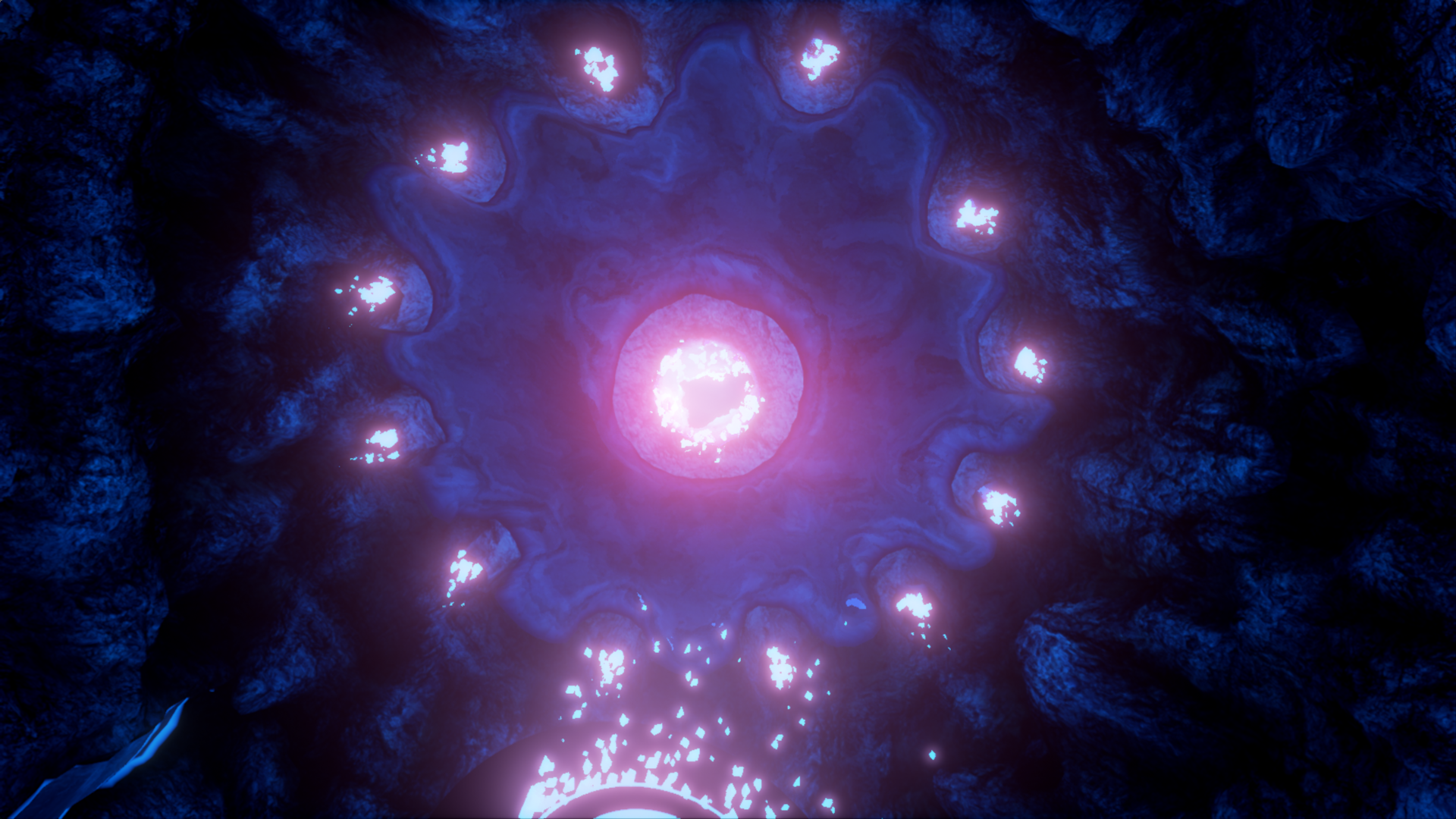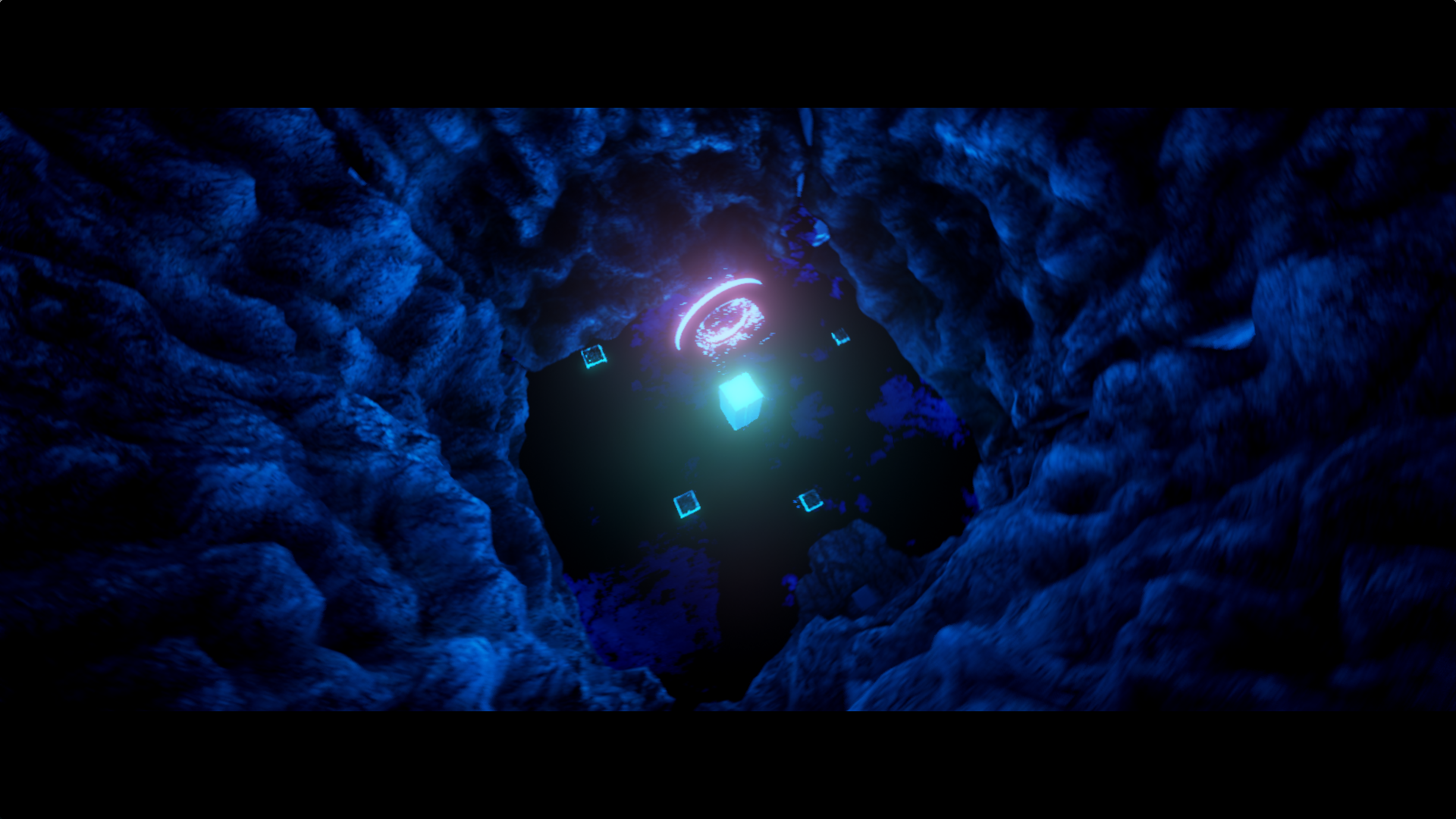The first important design decision that I had to take, regarded… art.
I didn’t have time to practice and become a less-than-mediocre 3D artist, but everyone can model a cube. I knew that is possible to create simple shapes directly in Unreal: that’s what I did, speeding up the pipeline a lot.
I decided to use very simple shapes and focus more on good looking materials -shaders-. The idea at first sounded amazing, but that means working a lot on textures. Again, not my thing. Then, I realized that emissive materials can be good looking without requiring HD textures. At this point the decision to set BLOCK in a cave was almost immediate.

Platform v1.0








